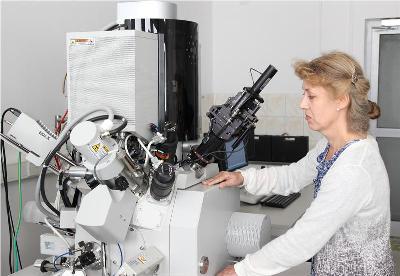University of Warsaw’s Faculty of Physics has installed focused ion beam (FIB) milling equipment that can produce micropillars, which are microscopic semiconductor structures from numerous cautiously selected layers having a nanoscale thickness. The micron-sized columns or micropillars will be utilized to develop effective yellow light lasers.
This latest equipment paves the way to special educational opportunities for students pursuing nanotechnology engineering. Micropillars are a type of optical microcavities, an arrangement in which small volumes of photons are detained for a very long time.
 University of Warsaw's Jolanta Borysiuk during the venting of the focused gallium ion beam milling equipment.
University of Warsaw's Jolanta Borysiuk during the venting of the focused gallium ion beam milling equipment.
According to Tomasz Jakubczyk, a student of Solid State Physics Division of the Institute of Experimental Physics, University of Warsaw, the surfaces used for the production of the micropillars were produced at the University in Bremen. Soon, the surfaces will be produced at the University of Warsaw itself through the molecular beam epitaxy equipment, which is now being deployed in the campus.
In order to fabricate a micropillar, a Helios NanoLab device uses a gallium ion beam for milling the surface so as to remove the material from the surface with high accuracy. The material removal results in a pillar of height and diameter in the micrometer range. The ions are excited to a high energy level, are made to focus to nanometer accuracy and are targeted at particular spots on the surface. Since the ions have significant mass and size, they do not enter the material, but cause sputtering of atoms from the surface. The atoms that have been sputtered get scattered in the vacuum chamber. A scanning electron microscope, which is an in-built component of the equipment, is used to evaluate the effects.
Researchers at the University of Warsaw’s Faculty of Physics are showing interest in micropillars featuring quantum dots. Jakubczyk stated that though quantum dots are excellent sources of entangled and single photons independently, desired properties are significantly improved by placing them inside the micropillars. A micropillar having quantum dots can release single photons more often, he added.
Micropillars can be used in advanced applications such as building single-photon sources and producing entangled photon pairs, which in turn can be used in quantum cryptography, quantum and optical computers.